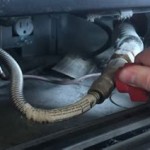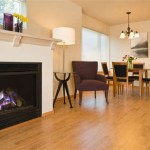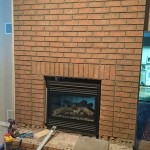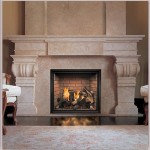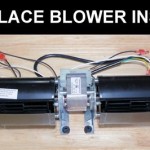Understanding and Troubleshooting Your Gas Fireplace Remote
Gas fireplaces offer a convenient and aesthetically pleasing way to heat a home. A key component of modern gas fireplace operation is the remote control, allowing users to adjust flame height, turn the unit on and off, and sometimes manage fan speed and thermostat settings from a comfortable distance. This article will delve into the workings of gas fireplace remotes, common problems, and potential troubleshooting steps.
The functionality of a gas fireplace remote relies on a communication system between the handheld device and the receiver unit located within the fireplace itself. These remotes typically use radio frequency (RF) signals, although some older models may employ infrared (IR) technology. RF signals offer a greater range and are less susceptible to interference from obstructions compared to IR signals. The specific frequency used varies depending on the manufacturer and model of the fireplace.
The receiver unit in the fireplace is connected to the gas valve and other relevant components. When a command is sent from the remote, the receiver interprets the signal and relays the appropriate instructions to the fireplace. For instance, pressing the "on" button on the remote triggers the receiver to open the gas valve, initiate the ignition sequence, and ultimately ignite the flames. The receiver also manages functions such as flame modulation if the fireplace is equipped with variable flame height settings.
Common Types of Gas Fireplace Remote Controls
Gas fireplace remotes come in various forms, each offering different features and levels of control. Understanding the types available can help in choosing the right remote for a specific need or in diagnosing potential problems.
Basic On/Off Remotes: These are the simplest type, providing only the ability to turn the fireplace on and off. They are often found on older or less expensive models. These remotes are robust due to their simplicity, but offer limited functionality.
Thermostatic Remotes: Thermostatic remotes offer the ability to maintain a set temperature in the room. The remote typically includes a built-in temperature sensor and sends signals to the fireplace to adjust the flame height accordingly. These remotes enhance energy efficiency and provide consistent heating.
Modulating Remotes: Modulating remotes allow for precise control over the flame height. This feature enables users to fine-tune the heat output and aesthetic appearance of the flames. Some advanced modulating remotes also allow for programming schedules and timers.
Remote Control Systems with Fan Control: Certain fireplace models incorporate a fan to circulate warm air more effectively. Remotes for these fireplaces often include controls for adjusting the fan speed, enhancing the distribution of heat throughout the room.
Troubleshooting Common Gas Fireplace Remote Issues
Several issues can arise with gas fireplace remotes, preventing them from functioning correctly. Attempting to diagnose and resolve these problems independently can save time and money. However, it is crucial to prioritize safety and consult a qualified technician if uncertain about any aspect of the troubleshooting process.
Battery Issues: The most common cause of remote failure is depleted batteries. Ensure that the batteries in both the remote and the receiver unit (if applicable) are fresh and properly installed. Use high-quality batteries to ensure optimal performance and longevity. Pay attention to the battery polarity when installing new batteries.
Signal Interference: Radio frequency interference from other electronic devices can disrupt the signal between the remote and the receiver. Try moving the remote closer to the fireplace to rule out range issues. Turn off or move potential sources of interference, such as wireless routers, cordless phones, and other electronic devices. If the issue persists, try changing the channel or frequency setting on the remote, if this option is available.
Pilot Light Problems: If the pilot light is not lit, the remote will not be able to turn on the fireplace. Ensure that the pilot light is lit and functioning properly. Refer to the fireplace's user manual for instructions on how to light the pilot light.
Receiver Unit Malfunctions: The receiver unit itself may be faulty. Visually inspect the receiver unit for any signs of damage, such as burnt wires or loose connections. Check the wiring connections to ensure they are secure. If possible, test the receiver unit with a known working remote to determine if the receiver is the source of the problem. If the receiver is malfunctioning, it may need to be replaced.
Remote Synchronization Issues: Sometimes, the remote and the receiver may lose synchronization. Refer to the fireplace’s user manual for instructions on how to re-synchronize the remote with the receiver. The synchronization process typically involves pressing a specific button or sequence of buttons on both the remote and the receiver.
Preventative Maintenance for Gas Fireplace Remotes
Regular maintenance can extend the life of the gas fireplace remote and prevent future problems. Some easy steps can be taken to ensure the remote's operating efficiency.
Regular Battery Replacement: Replace the batteries in the remote and receiver unit at least once a year, even if they are not yet depleted. This will prevent corrosion and ensure that the remote is always ready to use.
Protection from Damage: Protect the remote from physical damage by storing it in a safe place when not in use. Avoid dropping the remote or exposing it to extreme temperatures or moisture.
Cleanliness: Keep the remote clean and free from dust and debris. Use a soft, dry cloth to wipe down the remote regularly. Avoid using harsh chemicals or abrasive cleaners, as they can damage the remote's surface.
Proper Storage: When storing the fireplace for extended periods, remove the batteries from the remote and receiver unit. This will prevent battery leakage and corrosion.
By understanding the workings of gas fireplace remotes, recognizing common issues, and implementing preventative maintenance measures, users can ensure the reliable and efficient operation of their gas fireplaces for years to come. When in doubt, consulting the fireplace’s user manual or a qualified technician is always recommended.

Skytech 1001 On Off Fireplace Remote Control

Sit Gas Fireplace Or Stove Remote Control Wall Bracket Hechler S Mainstreet Hearth Home Troy Missouri

Gas Fireplace Remotes More Fireplaceremotecontrols Com

Skytech Manual Remote Control With Timer For Gas Logs Fine S

Acumen Rck Kw Timer Thermostat Fireplace Remote Control With 9 Foot Wires

Fireplace Remote Replacement For Skytech 1001th A And Procom

Regency Gt Gtm Gtmf Handset Remote Control 910 592 Friendly Fires

How To Fix Your Everwarm Fireplace Remote Ew4001th

Durablow Tr1001 Gas Fire Fireplace Remote Control Kit On Off Com

Fireplace Remote Control Thermostat Gas On Off Kit For Millivolt Valve Compatible With Skytech Ambient Majestic Monessen Vermont Display Screen Newegg Com
Related Posts

